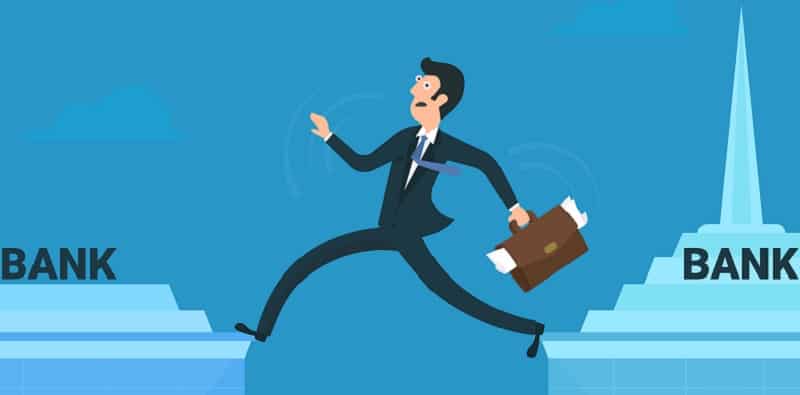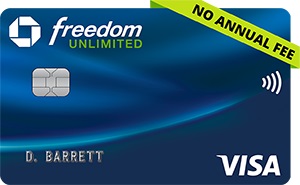
As banks start rolling out new promotions and benefits, everyone has wondered how to obtain those bonuses. However, most people do not make the move to switch banks simply because they often think that switching to a new bank can be stressful.
In this article we will breakdown everything you need to know about how to switch banks and some key tips to consider.
 |
 |
How to Switch Banks
The process of switching banks or credit unions is comparable to cancelling your lease and moving in to a new apartment. It does take a process. However, it is not as stressful as we think it is. Below, you will find a checklist of steps involved to help you switch to and from a bank.
We all have our reasons to switch to another bank or credit union. However, no matter what the reasoning is, your switch should be an effortless and swift process. So here are instructions on how to do it wisely.
Make a plan
Before leaving your old banking account, think about whether you are interested in continuing your experience with either an online bank or a bank with branches available across the nation. With an online bank such as CIT Bank and Discover, you can have access to a range of features, account promotions as well as low account fees. However, with HSBC Bank and Chase Bank, you will have the convenience and access of having thousands of locations across the nation!
Before choosing a bank, consider what features you would like to have. Below are a list of few things that I suggest you check first:
- Direct deposits.
- Automatic bill payments.
- Recurring transfers.
- Linked accounts.
- Banking alerts.
- Smartphone apps.
- Text alerts.
- Paper checks.
- Safe-deposit box.
Open the new account
It is definitely ideal to open a new account while you still have your current banking account still opened. Be sure to transfer your funds with your current account to your new banking experience. With a new account, be sure to research whether there are any fees associated such as ways to avoid any potential monthly or overdraft fees.
Here are some solutions to follow when opening a new account
- Check to see if your current banking solution has any termination fees. Typical to most accounts, you would have to keep your account opened for at least 3 months to avoid the fee.
- Get in contact with a CSR to see whether you have moved all your funds and if there are any impending payments you have to make with your current account.
Once all the funds and necessary requirements are done to close out your current account, be sure to have the necessary documents and information at the time of your new account opening. It is essential across all banks and credit unions for you to provide the following:
- An official photo ID—driver’s license, state ID, or passport
- Your Social Security Number
- Cash, check, or payment info (routing and account number) for the opening deposit
Update your bills and automatic payments
No matter if you are closing a business account, personal checking or even a CD account, be sure to note all of the automatic payments, reoccurring deposits, and annual fees. Wouldn’t want any payment to be delayed or rerouted when something as simple as this can be easily fixed.
However, in regards to automatic payments, keep in mind that they may be tied to your debit card number. I would most definitely recommending going through your old bank statements to see whether all your information are updated as well as going over items you might have missed out on.
Close your old account
Now that you have set up all the logistical aspect of the process and made sure that all the automatic transactions have cleared, you are ready to close your old account. It is most definitely within your best interest to obtain a written document from the bank or credit union that your account has been closed, that way you have prove in case any problem surfaces.
The problems can range from banks reactivating your closed accounts without your consent in order to fulfill automatic payments or deposits that came in after your account had been closed.
If your account has a negative balance after a month, the bank might close your account at their discretion, which will definitely harm your credit. Additionally, if you owe money on the account you’re closing, you won’t be able close it until you pay the balance and any fees.
Start fresh
After you have successfully closed your old account, you are ready to start your new banking experience! Think of it like the moment you first set foot on your college campus. Everything can be a little daunting and foreign. However, with a little time clicking around, you will be able to discover the features and amenities that could prove beneficial to your financial future with the bank. To stay on top of your account, be sure to read the fine print and policies to avoid any monthly or overdraft fees.
Conclusion
Whether you are a business owner looking to better your financial solutions or simply looking for a personal checking account, definitely keep in mind of the checklist above. Without a proper list of things to do, switching would most definitely be stressful with all the hidden fees you might encounter. No matter your reasoning for cancelling your current experience, I would hope this article has helped you one way or another.
In addition, we have a list of bank promotions to get some extra cash in your pockets today. You may also want to check out savings accounts if you want to get started on saving up money.
 The Chase Freedom Unlimited® Card offers a $300 bonus after spending $500 on purchases in your first 3 months from account opening. Enjoy 0% Intro APR for 15 months from account opening on purchases and balance transfers, then a variable APR. In addition, you can earn: • 6.5% cash back on travel purchased through Chase TravelSM, our premier rewards program that lets you redeem rewards for cash back, travel, gift cards and more • 4.5% cash back on drugstore purchases and dining at restaurants, including takeout and eligible delivery service • 3% on all other purchases (on up to $20,000 spent in the first year). After your first year or $20,000 spent, enjoy 5% cash back on travel purchased through Chase TravelSM, 3% cash back on drugstore purchases and dining at restaurants, including takeout and eligible delivery service, and unlimited 1.5% cash back on all other purchases. There is no minimum to redeem for cash back & your cash back rewards do not expire as long as your account is open. This card comes with no annual fee and you'll get a free credit score that is updated weekly with Credit JourneySM. Member FDIC |



